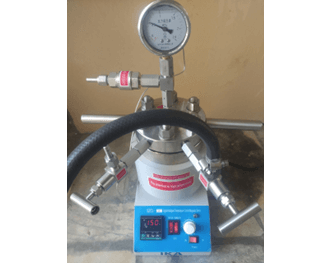Features of Metal Hydrides for Hydrogen Storage
Main Article Content
Abstract
The aluminum–nickel alloy samples did not exhibit any hydrogenation under the tested conditions. Titanium powders absorbed hydrogen up to 3.8 wt.% at 12 atm and 700°C, which is slightly lower than the theoretical value of 4.04 wt.% for TiH₂. Lithium hydride (LiH) samples demonstrated high absorption capacity: at 700°C and 12 atm, the hydrogen content in lithium reached 12.5 wt.%. Therefore, achieving high absorption levels (> 6 wt.%) requires high temperatures (around 700 °C) and elevated pressures (> 15 atm).
Keywords
hydrogen, battery, metal hydrides, reactor, hydrogen flow, aspect ratio
Article Details
How to Cite
Paizullakhanov, M.-S., Parpiev, O., Ernazarov, F., & Ruzimuradov, O. (2025). Features of Metal Hydrides for Hydrogen Storage. Chemical Reports, 6(1), 331-333. https://doi.org/10.25082/CR.2025.01.004

This work is licensed under a Creative Commons Attribution-NonCommercial 4.0 International License.
References
- International Energy Agency. The Future of Hydrogen, Seizing Today’s Opportunities // International Energy Agency: Paris, France, 2019.
- IRENA. Hydrogen: A renewable energy perspective, International Renewable Energy Agency, Abu Dhabi, 2019.
- REN21. Renewables 2020 Global Status Report. Paris: REN21 Secretariat, 2020.
- Blinov DV, Borzenko VI, Bezdudny AV, et al. Prospective metal hydride hydrogen storage and purification technologies. Power engineering: research, equipment, technology. 2021, 23(2): 149-160. https://doi.org/10.30724/1998-9903-2021-23-2-149-160



